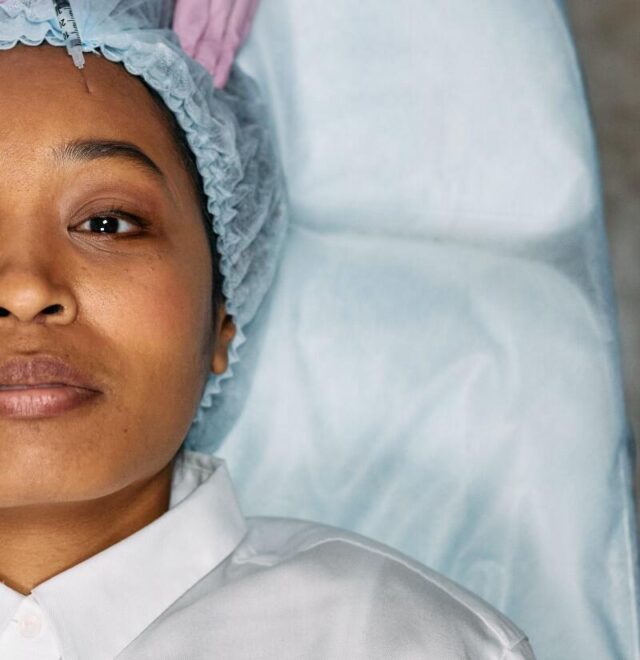The doctors express concern about a younger demographic using Medi-spas more frequently, and six of them warn that treatments performed by unqualified employees at some of these facilities increased the risk of consequences.
DOCTORS warn that the ‘’Barbie Botox’’ fad, which has women as young as their 20s rushing to get toxin-based operations to replicate the actress Margot Robbie’s appearance from the movie, may cause resistance among them and impede medical use in the future.
Doctors frequently utilise a treatment known as ‘’Trap Tox’’ to inject a class of medications known as botulinum toxins, including Botox, into the trapezius muscles of the upper back to treat migraines and shoulder pain.
@therealtiktokdoc Barbie Botox isn’t anything new … It really can help migraines … Consult a neurologist for headaches and it might be covered by insurance. … #barbie #traptox #barbiemovie ♬ Barbie Girl – Lady Aqua
But there has been a rise in demand for use as a cosmetic surgery since the premiere of the “Barbie” movie in July. On TikTok, the hashtag BarbieBotox had 12 million views.
The actress who plays Barbie, Margot Robbie, was somehow given credit for the alleged neck-slimming effects of the operation.
The technique was initially developed to help relieve the strain on the trapezius muscles, which can lead to headaches and excruciating neck stress.
It is now used off-label to lengthen the neck and cosmetically reduce the size of the shoulders. And on social media, it’s gaining popularity.
However, they aren’t treating wrinkling or loose skin here. They desire a neck that is smaller and more sculpted, according to President-elect of the Plastic Surgery Foundation Scot Glasberg, in a Business Day News video on YouTube.
@realdrbae #stitch with @ #greenscreen Barbie botox or as we like to call it, Kim K botox 😌 #traptox #botox #injectables #botoxinjection #traptoxsf #fyp #foryou ♬ original sound – Jonathan Kaplan
The use of the injection in the trapezius is ‘’off-label’’ because only operations affecting the face are permitted to utilise such injections for cosmetic purposes.
Health experts must determine whether ‘’off-label’’ uses are ‘’medically appropriate’’ according to the Food and Drug Administration.
The market for toxin-based injections, which is traditionally preferred by those over 40, is thought to be worth over $3 billion in yearly sales in the US alone, according to Reuters.
According to Precedence Research, the market for facial injectables would more than double in the following ten years and reach $36.8 billion by 2032.
The International Society of Aesthetic Plastic Surgery found that since 2017, the use of minimally invasive procedures like Botox and fillers has increased by 54.4%.
The doctors express concern about a younger demographic using Medi-spas more frequently, and six of them warn that treatments performed by unqualified employees at some of these facilities increased the risk of consequences.
The type of doctor who can operate a Medi-spa is not subject to any restrictions. In theory, a family physician or an obstetrician-gynaecologist can start a Medi-spa, and increasingly, nurse practitioners and physician assistants are also administering injections.
According to a cosmetic study published in the National Library of Medicine, Botox can fully paralyse the muscle if it is applied incorrectly or at the wrong dosage. On rare occasions, the neuro-toxin may move away from the injection site, weakening the nerve connections to nearby muscles.
According to health influencer and licensed physician @therealtiktokdoc, ‘’and especially if it’s around the neck, that can be quite significant because it can affect your ability to hold your head up properly.’’
Although the toxin injections are normally harmless, there is a chance that they could weaken nearby muscles for months if not done correctly. The science still needs to catch up to the clinical profile of it.
However, we are aware that neuro-toxins have been used in therapeutic settings at doses that are substantially higher than those used for cosmetic ones, and we are aware that the products are safe.
Shilpi Kheterpal, a dermatologist at Cleveland Clinic, notes that the increase in use among younger women, whose immune systems are frequently stronger, increases the danger that the medications may eventually stop working as well for them.
According to Kheterpal, if patients take large doses of Botox often, they may eventually lose their effectiveness- not just with Botox, but with the other medicines on the market as well, as they all share a similar molecule.
The risk of receiving care from someone who may not be fully certified is also emphasised by doctors, particularly at Medi-spas, where there is little oversight.
Barbie is a strong pro-feminist doll and movie for young girls, and women have been moving away from sexualising and objectifying their bodies.
Barbie is being used in this trend to promote the idea that we should have skinny necks, which is detrimental to the feminist movement. We ought to accept who we are as is.








